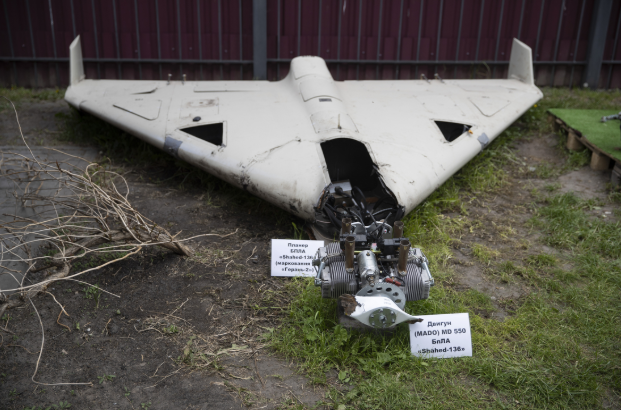|
Getting your Trinity Audio player ready...
|
Summary
Modern day slavery a case of vulnerable African women lured with shiny promises of a career in STEM or hospitality, their trips to Russia fully funded with no signs they are being trafficked and coerced into working in drone manufacturing plants that serve Russia’s war machinery.
What happens when you set out to work in a foreign country, happy to finally get a chance to advance in a sector where people like you hardly get a foothold. You are recruited with shiny promises of a career in STEM or hospitality only to be subjected to hard labor making weapons of mass destruction and the worst part is you can’t even leave.
In the cold shadows of the Russia Ukraine war, the growing demand for military artillery, at the center of diplomatic dialogues, far from the frontlines and away from international headlines, a new form of warfare is unfolding one not waged with missiles or guns, but with human labor. At the heart of it are vulnerable African women lured with shiny promises of a career in STEM or hospitality, their trips to Russia fully funded with no signs they are being trafficked and coerced into working in drone manufacturing plants that serve Russia’s war machinery.
These women, desperate for opportunity, are unwittingly drawn into an illicit network that funnels them into clandestine factories, where their hands, under duress, assemble the very drones fueling a devastating conflict. Recruiters preying on economic hardship and lack of opportunity in various African countries paint vivid pictures of well-paying jobs, legal residency, and a chance to escape poverty. Relocating to Europe has never been easier, just completing a computer game and a 100-word Russian vocabulary test can get you there. Roles in factories, agricultural sectors or domestic work are advertised to lure women seeking a lifeline, “the social media ads promised the young African women a free plane ticket, money and a faraway adventure in Europe. This program doesn’t just target vulnerable African girls as the facebook page promoting the Alabuga Start program states they also recruit in South America and Asia “to help ladies to start their career.”
“They turned us into hard laborers with low wages,” Chinara, one of the victims of the Alabuga program wrote to DW. “At first, we felt good because when we applied, we were offered areas such as logistics, service and catering, and crane operators,” wrote Chinara, whose name has been changed to protect her identity. Upon arrival in Russia or the factory, the illusion shatters. The victims on getting to Russia got assigned to a drone assembly factory, while others oversaw drone production and the remainder took on roles as cleaners. They find themselves living in dormitories, their passports confiscated, facing language barrier and racism, working long hours under surveillance and heavy supervision, assembling drone parts, soldering circuits, and handling hazardous materials without protection, pay, or proper training.
In the first half of 2024, 182 women were recruited, largely from Central and East African countries, officials even held recruiting events in Uganda, and tried to recruit from its orphanages, according to messages on Alabuga’s Telegram channel. Russian officials have also visited more than 26 embassies in Moscow to push the program. Due to employee shortage, the factory also sells the Women in STEM dream to students of Alabuga Polytechnic, a school attended by Russians aged 16–18 and Central Asians aged 18–22. Investigative reports from Protokol and Razvorot reveal that some individuals, as young as 15, have voiced concerns regarding inadequate working conditions. The program is promoted to the students as a drone making specialist program little did they know they will be making drones under harsh working conditions for meagre pay and huge health implications.
A mother from northern Zimbabwe expressing her concerns regarding her daughter’s hardships told DW, “She wanted to further her technical education. Now she told us about forced labor, she is hardly allowed to use her phone and is under surveillance. She has not received the $1,500 (€1,300) she was promised, now I can’t even get her back.”
“A father of another girl who left Zimbabwe for the Alabuga SEZ told DW it was a nightmare that a supposedly credible training program had turned into “a death trap.”
“And a mother in the Zimbabwean capital, Harare, told DW about her 20-year-old daughter in Alabuga, who was also supposed to undergo technical training. “But she is doing something completely different. We can hardly speak to her, her passport has been withheld so that she can’t run away,” the woman told DW.”
The implications extend far “beyond the battlefield.” These women, often unknowingly, become entangled in the mechanics of conflict, their forced labour directly contributing to the manufacture of weapons used in hostilities. They are not combatants, yet their exploitation serves the war machine, blurring the lines of culpability and victimhood in a deeply disturbing way. Their suffering is not collateral damage but a direct byproduct of a global system that undervalues female labour and fails to protect the most vulnerable. This raises uncomfortable questions about the ethical responsibilities of states and corporations implicated, directly or indirectly, in such supply chains.
The plight of these African women in Russia’s illicit drone manufacturing is a stark illustration of how systemic inequalities can be weaponized. This is not just human trafficking and forced labor but a profound human rights crisis, a glaring testament to intersecting vulnerabilities; It is a violation of international law and a gendered crime. Their silent suffering demands not just empathy but determined coordinated action. We must remember that wars are not only fought with bombs they are fought with bodies. And in this war, African women’s bodies are both battlefield and weapon.













